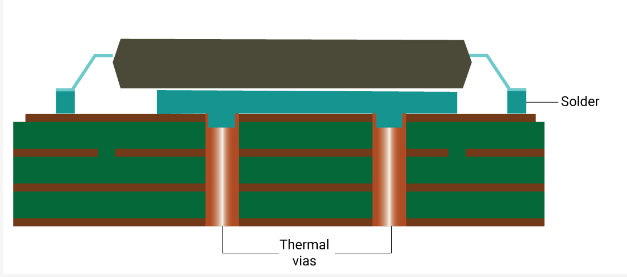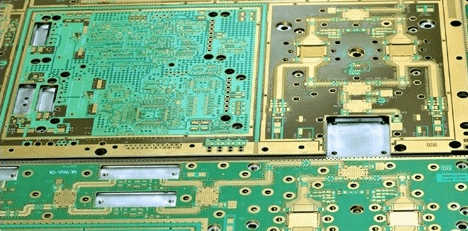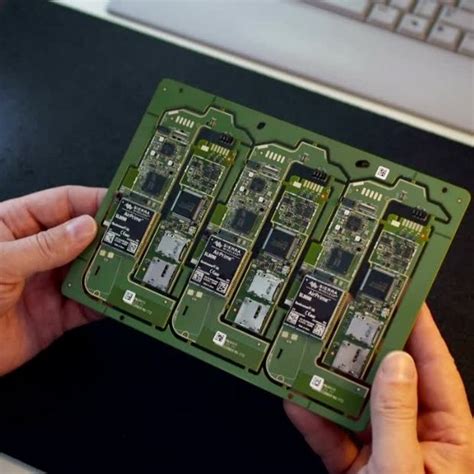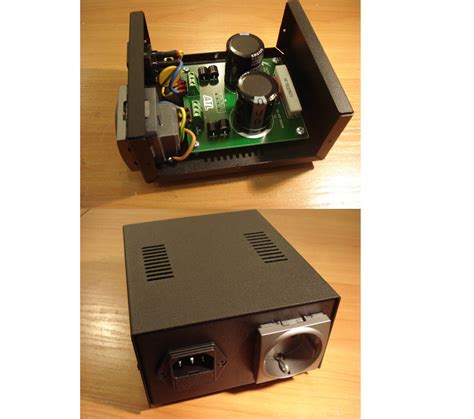Thermal Management of RF Counters in PCB Applications
Abstract
Thermal management is a critical aspect of designing printed circuit boards (PCBs) for radio frequency (RF) applications. RF counters, which are used in frequency measurement, signal processing, and communication systems, generate significant heat due to high-frequency operation and power dissipation. Effective thermal management ensures reliability, longevity, and optimal performance of RF circuits. This paper explores the challenges of thermal management in RF counters, discusses heat dissipation techniques, and reviews PCB design strategies to mitigate thermal issues. Key methods include material selection, thermal vias, heat sinks, and layout optimization. The study highlights best practices for maintaining thermal stability in high-frequency PCB designs.

1. Introduction
Radio frequency (RF) counters are essential components in modern communication systems, radar, and instrumentation. These devices operate at high frequencies, leading to substantial power dissipation and heat generation. Without proper thermal management, excessive heat can degrade performance, reduce component lifespan, and even cause catastrophic failure.
In PCB design, thermal management involves controlling heat generation, improving heat dissipation, and ensuring uniform temperature distribution. This paper focuses on thermal challenges in RF counters and explores PCB-based solutions to enhance thermal efficiency.
2. Thermal Challenges in RF Counters
2.1 Heat Generation in RF Circuits
RF counters process high-frequency signals, leading to energy loss in the form of heat. Key sources of heat include:
- Active components (e.g., transistors, amplifiers)
- Dielectric losses in PCB substrates
- Conductor losses due to skin effect at high frequencies
2.2 Impact of Excessive Heat
- Performance degradation: Increased temperature alters component parameters, leading to frequency drift and signal distortion.
- Reduced reliability: Thermal cycling causes mechanical stress, leading to solder joint failures and delamination.
- Electromigration: High temperatures accelerate metal migration in traces, increasing the risk of open circuits.
3. PCB Thermal Management Techniques
To mitigate thermal issues, PCB designers employ multiple strategies, including material selection, layout optimization, and passive cooling methods.
3.1 PCB Material Selection
The choice of substrate material significantly impacts thermal performance. Common PCB materials for RF applications include:
- FR-4: Standard material with moderate thermal conductivity (~0.3 W/mK).
- Rogers RO4000 Series: High-frequency laminates with better thermal dissipation (~0.6–1.0 W/mK).
- Metal-core PCBs (MCPCBs): Use aluminum or copper cores for superior heat conduction (5–400 W/mK).
3.2 Thermal Vias and Heat Spreading
- Thermal vias: Plated through-holes filled with conductive material to transfer heat from surface layers to inner planes or heatsinks.
- Copper pours: Large copper areas act as heat spreaders, distributing heat evenly across the PCB.
3.3 Component Placement and Layout Optimization
- Separation of heat-generating components: Prevents localized hotspots.
- Optimal trace routing: Minimizes resistive losses and reduces heat buildup.
- Ground plane utilization: Enhances heat dissipation and reduces electromagnetic interference (EMI).
3.4 External Cooling Solutions
- Heat sinks: Attached to high-power RF components to enhance convection cooling.
- Thermal pads and interface materials: Improve heat transfer between components and heatsinks.
- Forced air cooling: Fans or liquid cooling systems for high-power RF applications.

4. Case Study: Thermal Management in a 5G RF Counter PCB
A practical example involves a 5G RF frequency counter operating at 6 GHz. The design incorporated:
- Rogers RO4350B substrate for low dielectric loss and improved thermal conductivity.
- Thermal vias under RF power amplifiers to conduct heat to a bottom-side copper plane.
- Active cooling with micro-fans to maintain temperatures below 85°C.
Simulation results showed a 30% reduction in peak temperature compared to traditional FR-4 designs, validating the effectiveness of advanced thermal management techniques.
5. Future Trends in RF PCB Thermal Management
Emerging technologies aim to further enhance thermal performance:
- Embedded cooling channels: Microfluidic cooling integrated into PCBs.
- Graphene-based substrates: Exceptional thermal conductivity for high-power RF applications.
- AI-driven thermal optimization: Machine learning algorithms for predictive thermal modeling.

6. Conclusion
Effective thermal management is crucial for RF counters in PCB applications. By selecting appropriate materials, optimizing layouts, and integrating cooling solutions, designers can mitigate heat-related issues and ensure reliable operation. As RF systems evolve toward higher frequencies and power levels, advanced thermal management techniques will play an increasingly vital role in PCB design.






